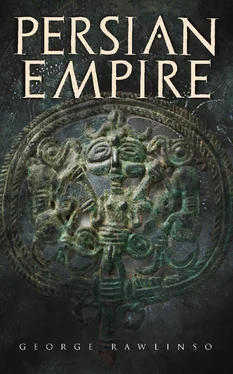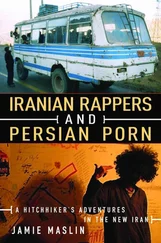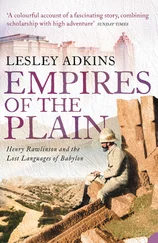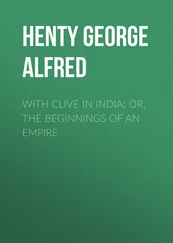The Oxus, like the Nile and the Indus, has a periodical swell, which lasts from May to October. It does not, however, overflow its hanks. Under a scientific system of irrigation it is probable that a considerable belt of land on either side of its course might be brought under cultivation. But at present the extreme limit to which culture is carried, except in the immediate vicinity of Khiva, seems to be four miles; while often, in the absence of human care, the desert creeps up to the very brink of the river.
The Jaxartes, or Sir-Deria, rises from two sources in the Thian-chan mountain chain, the more remote of which is in long. 79° nearly. The two streams both flow to the westward in almost parallel valleys, uniting about long. 71°. After their junction the course of the stream is still to the westward for two degrees; but between Khokand and Tashkend the river sweeps round in a semicircle and proceeds to run first due north and then north-west, skirting the Kizil Koum desert to Otrar, where it resumes its original westerly direction and flows with continually diminishing volume across the desert to the Sea of Aral. The Jaxartes is a smaller stream than the Oxus. At Otrar, after receiving its last tributary, it is no more than 250 yards wide. Below this point it continually dwindles, partly from evaporation, partly from the branch stream which it throws off right and left, of which the chief are the Cazala and the Kuvan Deria. On its way through the desert it spreads but little fertility along its banks, which are in places high and arid, in others depressed and swampy. The branch streams are of some service for irrigation; and it is possible that a scientific system might turn the water of the main channel to good account, and by its means redeem from the desert large tracts which have never yet been cultivated. But no such system has hitherto been applied to the Sir, and it is doubtful whether success would attend it. The Sir, where it falls into the Sea of Aral, is very shallow, seldom even in the flood season exceeding four feet. The length of the stream was till recently estimated at more than 1208 miles; but the latest explorations seem to require an enlargement of this estimate by at least 200 or 250 miles.
In rivers of the second class the Persian Empire was so rich that it will be impossible, within the limits prescribed for the present work, to do more than briefly enumerate them. The principal were, in Asia Minor, the Hermus (Ghiediz Chai), and the Maeander (Mendere) on the west, the Sangarius (Sakka-riyeh), the Halys (Kizil Irmak), and the Iris (Yechil Irmak) on the north, the Cydnus (Tersoos Chai), Sarus (Cilician Syhun), and Pyramus (Cilician Jyhun) on the south; in Armenia and the adjacent regions, the Araxes (Aras), Cyrus (Kur), and Phasis (Eion); on the Iranic plateau, the Sefid-rud, the Zenderud or river of Isfahan, the Etymandrus (Helmend), and the Arius (Heri-rud); in the low country east of the Caspian, the Gurgan and Ettrek, rivers of Hyrcania, the Margus Churghab (or river of Merv), the Delias or river of Balkh, the Ak Su or Bokhara river, and the Kizil Deria, a stream in the Khanat of Kokand; in Afghanistan and India, the Kabul river, the Hydaspes (Jelum), the Aoesines (Chenab), the Hydraotes (Ravee), and the Hyphasis (Sutlej or Gharra); in Persia Proper, the Oroatis (Hindyan or Tab), and the Bendamir; in Susiana, the Pasitigris (Kuran), the Hedypnus (Jerahi), the Choaspes (Kerkhah), and the Eulsenus (a branch of the same); in the Upper Zagros region, the Gyndes (Diyaleh), and the Greater and Lesser Zabs; in Mesopotamia, the Chaboras (Kha-bour), and Bilichus (Belik); finally, in Syria and Palestine, the Orontes or river of Antioch (Nahr-el-asy), the Jordan, and the Barada or river of Damascus. Thus, besides the six great rivers of the Empire, forty other considerable streams fertilized and enriched the territories of the Persian monarch, which, though they embraced many arid tracts, where cultivation was difficult, must be pronounced upon the whole well-watered, considering their extent and the latitude in which they lay.
The Empire possessed, besides its rivers, a number of important lakes. Omitting the Caspian and the Aral, which lay upon its borders, there were contained within the Persian territories the following important basins: the Urumiyeh, Lake Van, and Lake Goutcha or Sivan in Armenia; Lakes Touz-Ghieul, Egerdir, Bey-Shehr, Chardak, Soghla, Buldur, Ghieul-Hissar, Iznik, Abullionte, Maniyas, and many others in Asia Minor; the Sabakhah, the Bahr-el-Melak, and the Lake of Antioch in Northern Syria; the Lake of Hems in the Coele-Syrian valley; the Damascus lakes, the Lake of Merom, the Sea of Tiberias, and the Dead Sea in Southern Syria and Palestine; Lake Moeris and the Natron lakes in Egypt; the Bahr-i-Nedjif in Babylonia; Lake Neyriz in Persia Proper; the Lake of Seistan in the Iranic Desert; and Lake Manchur in the In dus valley. Several of these have been already described in these volumes. Of the remainder the most important were the Lake of Van, the Touz-Ghieul, the great lake of Seistan, and Lake Moeris. These cannot be dismissed without a brief description.
Lake Van is situated at a very unusual elevation, being more than 5400 feet above the sea level. It is a triangular basin, of which the three sides front respectively S.S.E., N.N.E., and N.W. by W. The sides are all irregular, being broken by rocky promontories; but the chief projection lies to the east of the lake, where a tract is thrown out which suddenly narrows the expanse from about fifty miles to less than five. The greatest length of the basin is from N.E. to S.W., where it extends a distance of eighty miles between Amis and Tadvan; its greatest width is between Aklat and Van, where it measures across somewhat more than fifty miles. The scenery which surrounds it is remarkable for its beauty. The lake is embosomed amid high mountains, picturesque in outline, and all reaching in places the level of perpetual snow. Its waters, generally placid, but sometimes lashed into high waves, are of the deepest blue; while its banks exhibit a succession of orchards, meadows, and gardens which have scarcely their equals in Asia. The lake is fed by a number of small streams flowing down from the lofty ridges which surround it, and, having no outlet, is of course salt, though far less so than the neighboring lake of Urumiyeh. Gulls and cormorants float upon its surface fish can live in it; and it is not distasteful to cattle. Set in the expanse of waters are a few small islets, whose vivid green contrasts well with the deep azure which surrounds them.
The Touz-Ghieul is a basin of a very different character. Situated on the upland of Phrygia, in lat. 39°, long. 33°, 30’, its elevation is not more than 2500 feet. Low hills of sandstone and conglomerate encircle it, but generally at some distance, so that a tract of plain, six or seven miles in width, intervenes between their base and the shore. The shape of the lake is an irregular oval, with the greater axis running nearly due north and south. Its greatest length is estimated at forty-five miles, its width varies, but is generally from ten to sixteen miles. At one point, however, nearly opposite to Kodj Hissar, the lake narrows to a distance of no more than five miles; and here a causeway has been constructed from shore to shore, which, though ruined, still affords a dry pathway in the summer. The water of the Touz-Ghieul is intensely salt, containing at some seasons of the year no less than thirty-two per cent of saline matter, which is considerably more than the amount of such matter in the water of the Dead Sea. The surrounding plain is barren, in places marshy, and often covered with an incrustation of salt. The whole scene is one of desolation. The acrid waters support no animal organization; birds shun them; the plain grows nothing but a few stunted and sapless shrubs. The only signs of life which greet the traveller are the carts of the natives, which pass him laden with the salt that is obtained with ease from the saturated water.
Читать дальше












